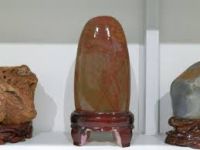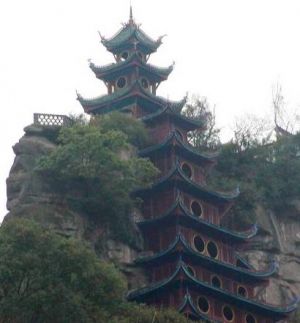Shibaozhai
Shibaozhai (Precious Stone Hamlet), situated on a cliff on the Yuyin (Jade Seal) Mountain along the northern banks of the Yangtze River, is one of the eight unusual architectural wonders of the world. Enjoying the name of "Pearl over the Yangtze River," it has listed a cultural unit under national-level protection. It is said that the legendary Chinese goddess Nuwa dropped a five-color monster suppressing stone on the riverbank, when she was patching up the sky, and the stone transformed into a mountain. In the late Ming Dynasty, Tan Hong, leader of a righteous army that had quelled a rebellion, stationed his troops there and built a hamlet, which became Shibaozhai. The Yuyin is called "Jade Seal," as it resembles an emperor's jade chop.
Shibaozhai was first built in the Wanli reign period of the Ming Dynasty, and expanded during the reign of Emperor Kangxi of the Qing Dynasty. In 1956 three more stories were added to Shibaozhai, making it a 56-meter-tall tower with 12 stories. This red wooden tower is host to many famous figure's portraits and statues, as well as poems and stone inscriptions.
On top of the Yuyin Mountain is a stone dam, covering 1,200 sq. m. On the dam is the Palace of the Heavenly Son, built in the sixth year of the Longqing reign period of the Ming Dynasty (1572). The front hall in the palace enshrines the statues of Lord Guan Yu and the four heavenly kings; while the central and rear halls enshrine the statues of the Jade Emperor, Queen Mother of the Western Heavens, and the Supreme Lord, among others.

